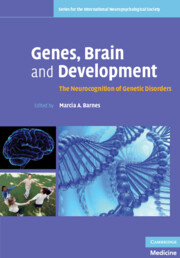Book contents
- Frontmatter
- Contents
- List of Contributors
- Preface
- Acknowledgments
- Section 1 Connecting genes, brain, and behavior in neurodevelopmental disorders
- Section 2 Genetic disorders and models of neurocognitive development
- 4 Language and communication in autism spectrum disorders
- 5 Language development in children with Williams syndrome: New insights from cross-linguistic research
- 6 Language in Down syndrome: A life-span perspective
- 7 Genetic disorders as models of mathematics learning disability: Fragile X and Turner syndromes
- 8 A developmental approach to genetic disorders
- 9 The use of strategies in embedded figures: Tasks by boys with and without organic mild mental retardation: A review and some experimental evidence
- Index
- References
7 - Genetic disorders as models of mathematics learning disability: Fragile X and Turner syndromes
Published online by Cambridge University Press: 04 August 2010
- Frontmatter
- Contents
- List of Contributors
- Preface
- Acknowledgments
- Section 1 Connecting genes, brain, and behavior in neurodevelopmental disorders
- Section 2 Genetic disorders and models of neurocognitive development
- 4 Language and communication in autism spectrum disorders
- 5 Language development in children with Williams syndrome: New insights from cross-linguistic research
- 6 Language in Down syndrome: A life-span perspective
- 7 Genetic disorders as models of mathematics learning disability: Fragile X and Turner syndromes
- 8 A developmental approach to genetic disorders
- 9 The use of strategies in embedded figures: Tasks by boys with and without organic mild mental retardation: A review and some experimental evidence
- Index
- References
Summary
Neurodevelopmental disorders and mathematics learning disability
Poor math achievement is well documented in both children and adults with fragile X or Turner syndrome (Bennetto et al., 2001; Brainard et al., 1991; Grigsby et al., 1990; Mazzocco, 1998, 2001; Rovet, 1993; Rovet et al., 1994; Temple & Marriott, 1998). However, there is limited understanding of the cognitive mechanisms that contribute to these poor math outcomes. Specification of these underlying causes is the necessary next step in research on the cognitive phenotypes for these disorders (Mazzocco & McCloskey, 2005). Our efforts to understand the origins of mathematical cognition in fragile X and Turner syndromes are guided by existing knowledge in the field of mathematics learning disability (MLD). This body of research provides a conceptual framework for the contribution of different cognitive systems, such as executive function, visual–spatial, and language skills, to overall competence in mathematics (see Geary, 1993, 1994) as elaborated later in this chapter. Accordingly, the assessment of math ability in persons with fragile X or Turner syndrome is most informative when examined in the context of the overall cognitive phenotype, or the set of cognitive characteristics, associated with each disorder.
Although models of MLD are informative for understanding mathematical functioning in genetic conditions such as fragile X or Turner syndrome, the study of these syndromes may also inform the broader field of MLD research.
- Type
- Chapter
- Information
- Genes, Brain and DevelopmentThe Neurocognition of Genetic Disorders, pp. 143 - 174Publisher: Cambridge University PressPrint publication year: 2010
References
- 1
- Cited by

